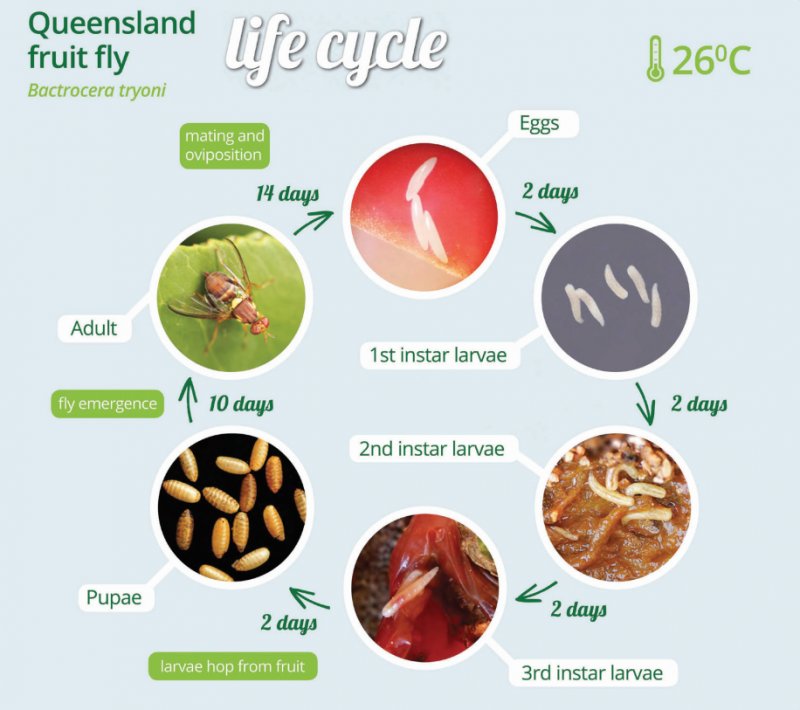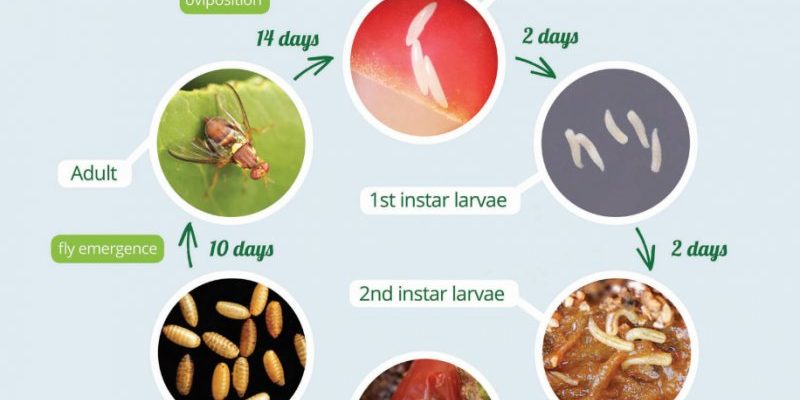
These small flies, scientifically known as *Drosophila melanogaster*, are much more than an eyesore at your picnic. They are remarkable tiny beings that have adapted to life alongside humans, taking advantage of our food choices and waste. But how do they do it? Here’s a closer look at their habitat, how they manage to thrive, and the clever tricks they use to adapt to their environment.
Understanding Fruit Fly Habitat
When you think of fruit flies, you might picture them buzzing around your overripe bananas, but their habitat is much broader. Fruit flies are commonly found in areas where decaying fruits and vegetables are present, which is essential for their life cycle. They thrive in warm, humid places. You might find them in:
- Your kitchen—especially around fruits, vegetables, and any spilled sugary substances.
- Garbage bins, where they feast on decomposing organic matter.
- Gardens, where they lay their eggs on rotting fruits that provide food for their larvae.
Honestly, these tiny pests are like the party crashers of the insect world—they show up wherever there’s food! This adaptability in habitat choice contributes significantly to their survival. Whether it’s a compost pile or a neglected bowl of fruit, if there’s something to munch on, you can bet fruit flies will be nearby.
Life Cycle of Fruit Flies
To understand where fruit flies live, it’s also important to know how they breed and grow. The life cycle of a fruit fly includes several stages: egg, larva (or maggot), pupa, and adult.
– Egg Stage: Female fruit flies can lay hundreds of eggs in a single sitting. They usually choose moist environments, like the surface of rotting fruit, to deposit their eggs.
– Larva Stage: After a day or two, the eggs hatch into larvae, which feed on the fruit as they grow. You might not even notice them at first, but they’re hard at work.
– Pupa Stage: Once they’ve had their fill, the larvae enter the pupa stage, during which they transform into adult flies. This typically happens in a cozy, safe location where they won’t be disturbed.
– Adult Stage: Finally, the adults emerge, ready to start the cycle all over again.
Understanding their life cycle helps explain why fruit flies seem to appear out of nowhere in your kitchen—they’re continuously reproducing as long as the conditions are right.
How Fruit Flies Adapt to Their Environment
Fruit flies are remarkable for their ability to adapt to various environments. Here’s the thing: they’re not just surviving; they’re thriving, even in challenging conditions. They do this through several fascinating adaptations:
1. Rapid Reproduction: They can reproduce quickly, which means that even if temperatures fluctuate or food sources change, they can quickly repopulate and maintain their numbers.
2. Diet Flexibility: While they prefer sugary substances, they can also adapt their diet to include other organic materials if needed. This flexibility is key in ensuring they find nourishment, no matter where they are.
3. Behavioral Changes: Male fruit flies are known for their courtship displays, which can adapt based on pheromones present in their environment. This helps them attract mates more effectively in different habitats.
Imagine being able to quickly change your eating habits or social behaviors based on what’s available to you—fruit flies do just that, which is part of what makes them so successful.
The Role of Temperature and Humidity
Temperature and humidity significantly affect fruit fly survival. They thrive in warmer temperatures, typically between 75°F and 80°F (24°C to 27°C), but they can adapt to cooler conditions too. Here’s how these environmental factors play a role:
– Temperature Sensitivity: At cooler temperatures, fruit flies tend to slow down. However, they can survive in slightly warmer conditions, which is why you often see them in kitchens during the warmer months.
– Humidity Levels: Humid environments provide the moisture necessary for their eggs to survive. Without adequate humidity, their eggs—and their chances of reproduction—could be in jeopardy.
By understanding how temperature and humidity affect their habitat, we can see why fruit flies are often buzzing around our homes, especially in the summer.
Natural Predators and Threats
While fruit flies are resilient, they aren’t without their enemies. Various predators keep their populations in check, which is essential for maintaining the balance in the ecosystem. Here are some of their natural threats:
– Predatory Insects: Many insects, like spiders and some wasps, hunt fruit flies. These predators help control their population, preventing any one species from becoming too abundant.
– Environmental Changes: Changes in climate can also impact fruit fly habitats. For instance, an extended cold snap could kill off many adult flies and disrupt their breeding cycles.
Even these tiny creatures face challenges in nature. It’s a reminder that, regardless of size, every living being has to navigate a complex web of interactions in its environment.
Why Fruit Fly Adaptations Matter
Understanding how fruit flies live and adapt is essential for several reasons. For one, they serve as important indicators of environmental health. Their presence can signify the availability of organic matter and the state of decomposition in an area.
Moreover, they are a vital part of the food web. Their larvae feed on decaying produce, breaking it down and recycling nutrients back into the soil.
Finally, fruit flies are widely used in scientific research. They can help scientists learn more about genetics and disease. Their adaptability makes them a valuable subject for studies in evolution, behavior, and physiology.
By studying these tiny flies, we gain insights into broader biological principles that apply to many living organisms, including humans.
Fruit flies may be small, but their impact is significant. They show us how even the tiniest creatures can adapt and thrive in changing environments. From their clever breeding techniques to their resilience against predators and environmental shifts, fruit flies are remarkable survivors.
Next time you see one buzzing around your kitchen, remember that it’s not just a pest; it’s a tiny marvel of nature, adapting and thriving right alongside us. Embracing this perspective can make us appreciate the puzzle of life a bit more, understanding that everything—no matter how small—plays a role in our ecosystem. Whether it’s through their life cycle or their adaptability, fruit flies are a testament to nature’s incredible design.

